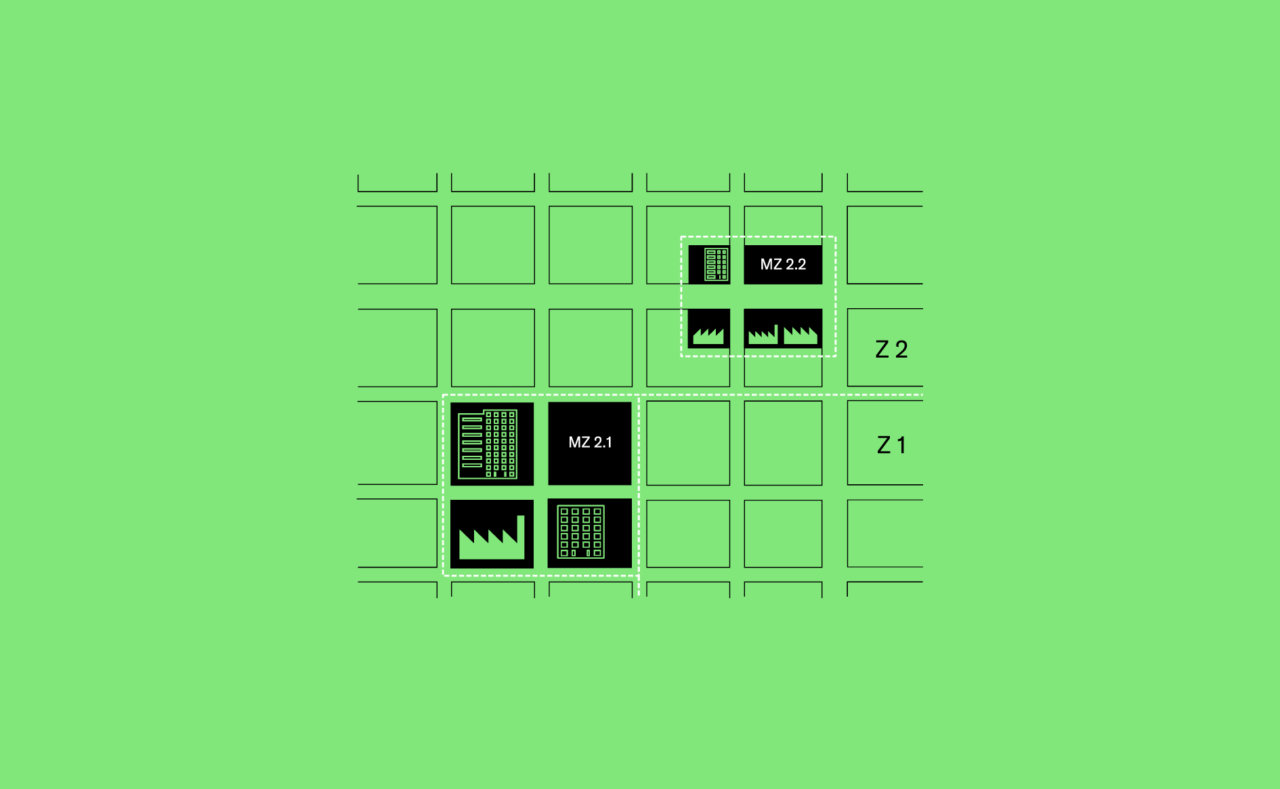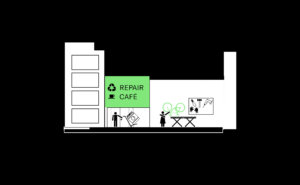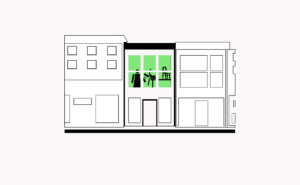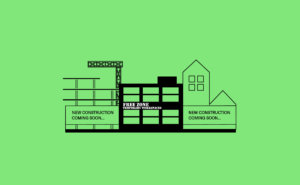
C.1 Microzoning
Strategically enabling zoning exceptions can protect vulnerable land uses or provide the grounds for experimentation in mixing land uses and building types.
[Context] Microzoning is a tactical planning tool that can create flexibility in zoning plans and define unique conditions for a specific site. Urban manufacturing areas with high real estate pressure are often exposed to piecemeal change through rezoning. Vacant sites in cities with low real estate pressure may struggle to change due to a lack of strategic planning to align investors or finance and deadlines to drive development. Microzoning can be used to increase the symbiosis of existing businesses in a neighbourhood. It can help build a thematic cluster of businesses. It can reorganise sites to make ‘industrial land work harder’ (known as industrial intensification). It can also be used to introduce mixed use zoning to take advantage of airspace that manufacturing doesn’t use (referred to as co-location). Often conditions are particular to each site. There are many examples of microzoning, including ‘urban innovation districts’ in the USA, ‘urban innovation areas’ in the Netherlands, PDR (Production, Distribution and Repair) in San Francisco, ‘Planned Manufacturing Districts’ in Chicago, ‘co-location zones’ in London and ‘zones for economic mixed use’ (ZEMU/OGSO) in Brussels. If well planned, it can provide R.9 Assured Security of Space for manufacturers in both highly mixed neighbourhoods and industrial zones.
[Problems] Considering that microzoning provides flexibility, it also provides uncertainty as there may be no precedent for a certain typology or project. This can mean that businesses may be reluctant to invest or choose to sell their land to speculators. Investors may be uncomfortable about loans and potential. Future occupants may be unconvinced to purchase land. Furthermore, for new construction projects requiring design and planning permissions can easily take five years before the building is ready to be occupied which is far too long for a business to wait. For this reason, microzoning which is driven by property led development risks being generic and taking many years to become functional.
[Forces] Microzoning helps develop sites and projects with very particular qualities. But certain mixes of users or occupants will require good planning and design in order to create comfortable conditions for cohabitation. Logistics can conflict with pedestrians, noise from trucks arriving early in the morning can disrupt sleeping neighbours, industrial spaces can appear messy and unsightly and buildings require suitable technical solutions to insulate against noise. This requires the individual or organisation coordinating the project from the developer’s side and the public authority’s side. Furthermore, there is a risk of co-location that results in gentrification rather than cohabitation of different land use types. Developers responsible co-location projects (co-location of industry and housing) are generally housing developers and may be tempted to follow their instincts and convert the industrial spaces into retail or office spaces to fetch larger returns in investment than workshops and production spaces. Finally, design is critical as some technicalities like noise and fire can unnecessarily limit the types of manufacturers that can occupy spaces under housing.
[Solutions] Use microzoning to provide a range of unique interventions or activities which cannot be developed under standard planning regulation or where unique conditions are present. Considering that Microzoning can involve mixed use, it could be used strategically as C.10 Transition Zones between residential/commercial areas and industrial areas. If planned strategically, microzoning can accommodate solutions for N.3 Mixing Complementary Making & Related Services, which could include a P.8 Community Hub in Making Locations and P.6 Re-use and Repair Centres. C.5 Varying Unit Sizes and C.4 Diverse Tenure Models can also be planned with microzoning. C.9 Clustering Messy Making Along Infrastructure and B.5 Enabling Vertical Making can shield housing or other activities which are more sensitive to noise. B.1 Making Around Courtyards, a B.2 Yard for Logistics and making at the N.11 Back of the High Street are ways to provide B.6 Easy Loading and Unloading and to avoid conflict with pedestrians. C.6 Strategic Access to Multi-modal Transport, is a trigger for industrial intensification and co-location, particularly for sites located near a train, tram or metro station. Microzoning can offer public authorities with a negotiation tool to access space and therefore acquire sites for manufacturing to increase C.3 Balance Between Public & Private Land. A R.3 Curator can be an essential guide to interpret the ambitions for the microzoning and the application on the ground. This role could involve protecting businesses, intensifying development (industrial intensification), creating greater symbiosis between businesses or developing suitable mixed use neighbourhoods (co-location).
[Contribution] Add contributions here.







